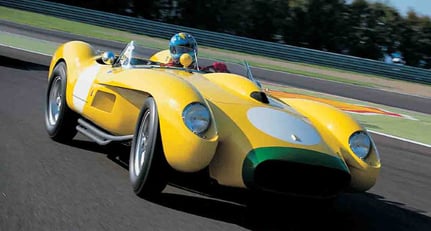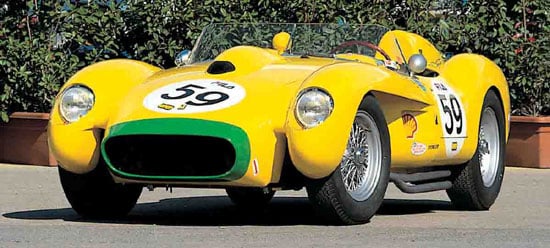
The following is an edited extract from Auto Italia magazine, February 2004. For access to the full feature, plus articles on Lancia’s F&M Specials, Isotta Fraschini, Maserati Karif and much more, see www.auto-italia.co.uk
Two days, two tracks, two cars – a Ferrari 206SP and a 250 Testa Rossa at Fiorano and Mugello. Brazilian racer and Ferrari collector Carlos Monteverde was at Fiorano – Ferrari’s private track – to test his cars before motoring down to Mugello in Tuscany for the 2003 Ferrari Festival.
I read somewhere recently that you don’t own cars like these Ferraris, you are merely a temporary custodian. It’s true, cars like these are guaranteed to outlive their custodians. They will be here when the Solar System implodes. Just watching the cars being moved around and being near them is a pleasure.
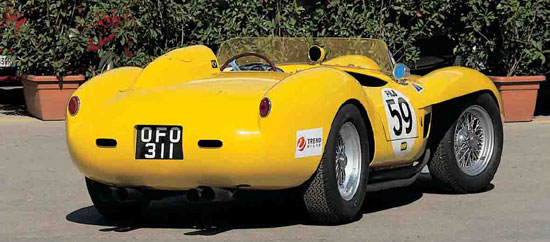
Testa Rossa chassis number 0738 has had several makeovers during its life. It first turned a wheel in 1958 when Brazilian owner Jean Louis Lacerda ordered it for his race team. After much South American racing, the car was used on the roads around Sao Paolo until it fell apart. It was then shipped to Italy to Carrozzeria Drogo where a GT body was made and fitted. The next owner – also Brazilian – was Camillo Cristofaro who took it back to Sao Paolo for road use. Changing hands again, the next owner put the Drogo-bodied 250 back into competition until 1970 when it was re-united with Camillo Cristofaro for road use. Englishman Nick Harley hunted the car down and brought it back to Europe in 1988. It passed through the hands of Bob Rubin and Paul Vestey and went to Neil Twyman where the decision was taken to return the car to its original shape with a new aluminium ‘pontoon’ body, fabricated by RS Panels, like the original Scaglietti Modena sculpture of 1958.
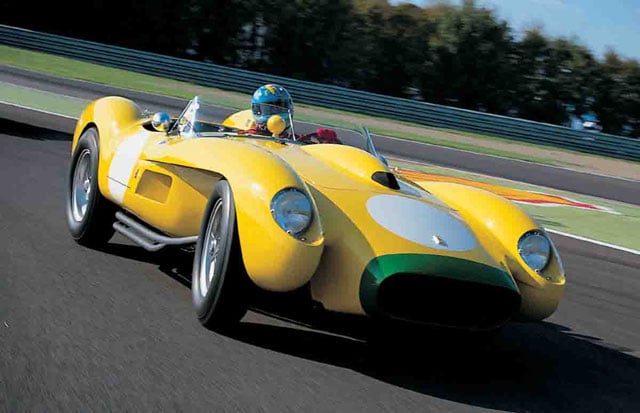 So, after all that globe-trotting Testa Rossa number 0738 is here at Maranello right back where it was born 45 years ago, still with its original steel chassis, engine, gearbox, axle and running gear. Let’s look at some numbers: a 3.0-litre V12 (73mm x 58.8mm) motor producing 300bhp at 7,200rpm. A massive 180 litre fuel tank fills the rear end. Its dry weight of 800kg means 0-60mph in around 7 seconds, 100mph in 16 and a top speed of 270km/h (170mph) on drum brakes!
So, after all that globe-trotting Testa Rossa number 0738 is here at Maranello right back where it was born 45 years ago, still with its original steel chassis, engine, gearbox, axle and running gear. Let’s look at some numbers: a 3.0-litre V12 (73mm x 58.8mm) motor producing 300bhp at 7,200rpm. A massive 180 litre fuel tank fills the rear end. Its dry weight of 800kg means 0-60mph in around 7 seconds, 100mph in 16 and a top speed of 270km/h (170mph) on drum brakes!
Driving through a four-speed ’box with near 50-50 weight distribution and a good old live axle (although some works cars had De Dion), you have a recipe for driver pleasure that modern man is still trying to better. I’m not saying that modern cars aren’t quicker: it’s just that these old cars are so engaging. There is a sense of satisfaction from piloting wobbly old historic race cars that is absent in the likes of a Radical, a Ferrari 360, a Subaru Impreza or anything else with modern-day grip and light controls.
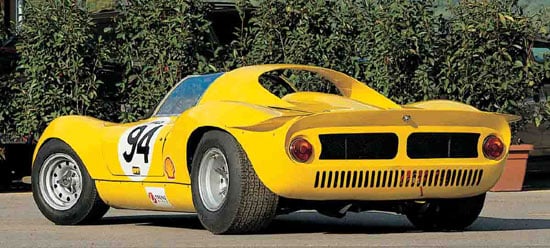
The little Dino 206SP (chassis 0032) also belongs to Carlos Monteverde. So beautiful is the 206 that you want to give it a hug. Built in 1966/7 the 206SP was intended for Group 4 homologation but labour disputes meant that only 18 were built, instead of 50. Once again, Piero Drogo’s Modena Carrozzeria created the bodywork – a scaled-down version of the P3. A sculpture worthy of a Turner Prize, although greater minds than mine prefer a pile of bricks or an unmade bed.
Many Dino 206SPs had the roof section removed to reduce cockpit temperatures and improve access. The chassis is a semi monocoque with steel tubes, stressed aluminium panels and some glass fibre. 110 litre bag tanks fill the sills. Engine specifications varied. All had the short-stroke screamer 1,986cc, four-cam V6 motors. With an 86mm bore and 57mm stroke, these engines thrived on revs: 218bhp at 9,000rpm is the original quoted figure but modern technology has pushed the power up to 280bhp at 9,500rpm. Some had 3 x 40 DCN2 Weber carbs, some injection, some had twin-plug ignition and some had three-valve engines. This one (engine number 233-4) has single-plug ignition, injection and three-valve heads. This lot all drives through a Ferrari five-speed transaxle. The gear lever has a mechanical device in the gate to prevent you from accidentally wrong-slotting. Limited-slip, straight-cut gears and a dogleg first layout are all there. Top speed is 268km/h (168mph): not bad for two litres.
Climbing in takes care, but once down in the almost central rhd driving position you can see why this car works. It feels right. The laid-back supportive seat extends right down to your knees, spreading the weight of your body over a very large area, negating the need for much padding. There is also a token passenger seat as per period regs. The steering has just two turns between locks and the power band is narrow. It comes on song at 7,000rpm, with 9,000 or a maximum of 9,500rpm before the red line. Torque is not strong which is good news and bad news: bad news because if you make a mistake and find yourself off-cam, it will cost you time. And good news because it means less chance of flicking the tail out under power. This gives a very neutral and well-balanced set-up with some limited dive and squat to aid traction.
We followed the Dino to Mugello where a transmission problem curtailed its practice session. The car is the nimbler, more modern and certainly quicker car of this delectable duo, but given the choice, I’d prefer to do battle with the Testa Rossa. You would then have a proper fight on your hands – the 30 other cars in the race plus the car you are driving.
 |
 |
|
Words by Roberto Giordanelli. Pictures courtesy of Phil Ward and Auto Italia magazine.
See www.auto-italia.co.uk or call 01858 438817 for back issues and subscriptions. |
